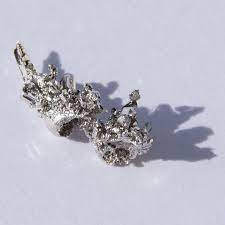Palladium
Palladium is one of a number of metals starting to be used in the fuel cells to power a host of things including cars and buses. Palladium is also widely used in catalytic reactions in industry, such as in hydrogenation of unsaturated hydrocarbons, as well as in jewellery and in dental fillings and crowns.
Palladium is also widely used in catalytic reactions in industry, such as in hydrogenation of unsaturated hydrocarbons, as well as in jewellery and in dental fillings and crowns.

